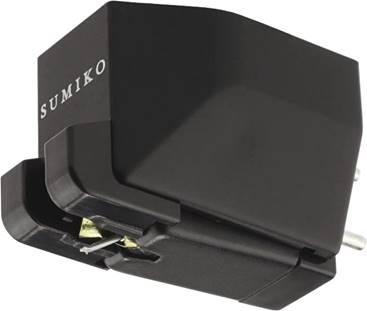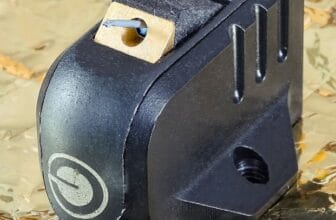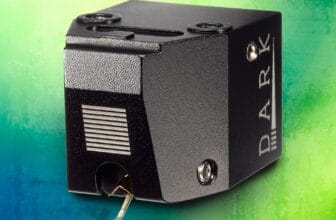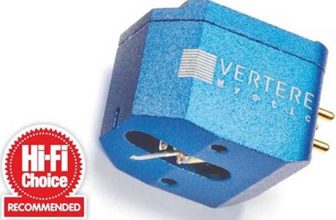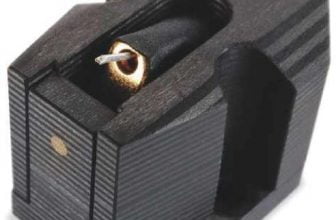SUMIKO AMETHYST Review – Diamond issue
Is Amethyst a diamond? Noel Keywood investigates Sumiko’s high-end MM cartridge. Read our SUMIKO AMETHYST Review.
Sumiko’s Amethyst moving magnet phono (MM) cartridge comes in at the high end.That puts it well above Audio Technical VM95SH and Ortofon’s 2M Black, both of which set high standards. Moving magnet cartridge design gets progressively better with time, and today’s designs differ much from those of yesterdayThink, bright-er, clearer and more detailed. More like digital in fact, if still with analogue smoothness.
“lt offers the sound of the past with performance of today”
The Amethyst comes into this challenging environment with an interesting proposition sound wise – one I have sympathy with. It offers the sound of the past with performance of today, at least in outline.That means lovely analogue smoothness and body conspicuously free of digital harshness. Of which I’ll say more later.
The Amethyst is a straightforward MM design wise. It has a removable stylus that’s easily replaceable if damaged. A 0.5mm aluminium cantilever tube carries a nude line-contact stylus Sumiko say. This is conventional construction, similar to Goldrings, Audio Technica VM95 and Ortofon 2M cartridges, that additionally benefit from Shibata or Frtiz Geiger tip profiles. But at this price level Audio Technica use a tapered aluminium cantilever in their VM750SH with Shibata tip, to get the Amethyst into market pretty sophisticated nowadays.
The black plastic body has captive nuts as is becoming common, making arm fitment easy especially in fixed head shell designs such as Regas. Two sets of hex head screws are supplied, but with no hex key to tighten them nor protective headshell washers – unfortunate ommissions at the price.There is a stylus brush though.
SOUND QUALITY
I fitted the Amethyst to our SME309 arm, mounted on a Timestep Evo modified Technics SL-1210 Mk2 Direct Drive turntable. It fed an Icon Audio PS3 Mkll valve phono stage, driving an Icon Audio Stereo30 SE single-ended valve amplifier, hooked up to Martin Logan ESL-X hybrid electrostatic loudspeakers through Chord Company Signature Reference cables.A minimalist but accurate and revealing system.
The roll down in treble revealed context. High-end MM cartridges are by measurement was obvious, Neil Young’s Tell Me Why from After The Goldrush (180gm all-analogue re master) coming over as full bodied yet soft and easy going.The cutting edge of his closely miked guitar strings was muted: instead I heard a gentler delivery.There was body to his guitar and vocals were solid centre-stage but the sound was easier than I know it, rather than forward and challenging.
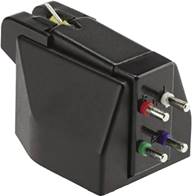
At rear lie conventional connecting pins, right channel being red (+) and green, left channel white (+) and blue.
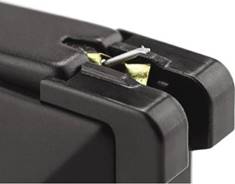
The cantilever uses a parallel sided aluminium tube with, Sumiko say, a line contact stylus attached direct (nude). The stylus assembly can be removed for replacement.
With Hugh Masekela’s Uptownship from Hope (Analogue productions, 180gm all-analogue) kick drum strikes had weight and impact, Masekela’s trumpet blaring out confidently. Hand drums sped along, if without the transient attack of cartridges with stronger treble. There was a sense of strength and confidence to the sound, that latter coming from this cartridge’s excellent tracking ability I suspect.
Fleetwood Mac’s Dreams, from Rumours, was nicely handled from our old original pressing, surface noise from a much played LP barely obvious.The bass line had weight and sat forward in the mix, providing a firm underpinning. Mick Fleetwood’s drum kit was similarly wrought large, with presence on the sound stage.
Spinning a later re-master of Rumours, that has less treble, the Amethyst gave an obviously warm balance lacking in high end detail. Cartridges with stronger treble and greater high frequency insight, such as Audio Technical VM95 SH or Ortofon’s 2M Black – both Shibatas – get further into this track.
Whilst the Amethyst gave a good account of itself with Rock, with strong bass and a dynamically muscular delivery, Marianne Thorsen’s violin on 2L’s LP of Mozart violin concertos was a bit hard of tone and generalised at centre stage, with some blur to strings.This track reveals what a well profiled modern stylus, such as a Shibata, can do – and the Amethyst lacked such insight. However, classical music never was popular on LP because of ticks and pops, especially on low levels, so my observations may not concern too many listeners here.
CONCLUSION
Sumiko’s Amethyst moving magnet cartridge has a warm sound replete with analogue smoothness. Strong, firm bass gives it a muscular quality and excellent tracking a confidence of delivery. It lacks detail retrieval and insight however that, at the price, others manage better at less cost. So a nice cartridge in itself if you want such a sound balance, but expensive against modern, more technologically sophisticated rivals.
The body has blind threaded brass inserts at top for easy fixing. They accept short screws (supplied) only.
MEASURED PERFORMANCE
Frequency response of the Amethyst falls slowly and smoothly above 1kHz due to classic generator loss before output moves back up at 12kHz due to tip resonance.
Inner groove tracing loss (red trace) due to tip radius is on the low side up to 15kHz, just -2dB, but rises steeply to -4dB at 20kHz. Overall, the Amethyst will have a fairly relaxed sound balance in keeping with the vinyl disc, but on inner grooves will sound warm. Other tip profiles suffer less loss on inner grooves, around -2dB at 20kHz.
Tracking of standard 300Hz test tones on CBS-STR112 test disc was excellent, the Amethyst clearing a very high 90 muym lateral track at 2gm down force (recommended). At 1kHz (B&K2010) where acceleration is higher and tip mass more influential the highest 25cms/sec band was cleared – surprising since few cartridges achieve this. The waveform was distorted but the stylus stayed in the groove without mistracking – an excellent result.
Distortion was higher than usual at 1.5% on lateral modulation against a typical figure of 1% (CBS-STR112 test disc).
On vertical modulation distortion rose to a high-ish 4.6% due to a measured vertical tracking angle of 28 degrees (DIN 45-452 test disc). Optimal is 22 degrees but high VTA – up to 30 degrees – is common, to maintain clearance above the disc. So not a low distortion cartridge, if not different from many.
Output measured a low 2.4mV at 3.45cm/sec due to low magnet strength or high physical clearances in the generator. Volume will have to be turned up.
The Amethyst has falling treble and will sound warm, but full bodied in consequence. It tracks very well, but output is low by current standards.
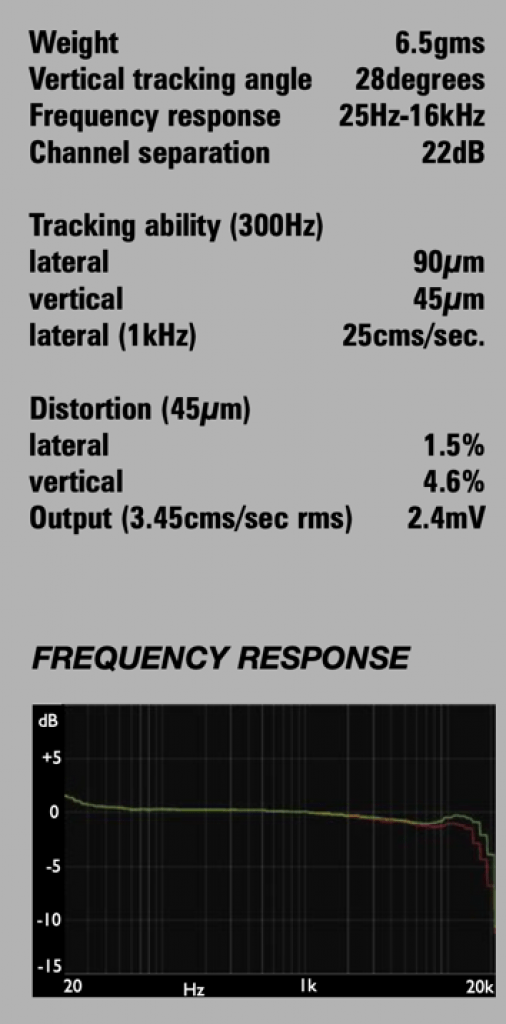
Tracking force 1.8-2.2gm
EXCELLENT – extremely capable
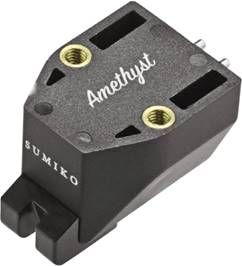
VERDICT
When you purchase through links on our site, I may earn an affiliate commission. Here’s how it works.
